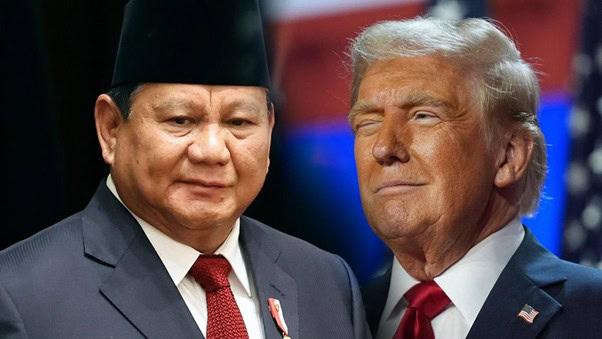On July 15, 2025, the U.S. government, under President Donald Trump, officially confirmed a 19% tariff on Indonesian imports, down from an initially proposed 32%. This policy will take effect starting August 1, 2025, following a broader trade agreement in which Indonesia committed to buying U.S. energy, agricultural products, and aircraft.
While the reduced tariff offers partial relief, the impact on Indonesia’s economy—both for businesses and everyday consumers—is still significant. Here is a comprehensive look at both negative and positive effects, clearly separated for Indonesian businesses and consumers.
Impacts on Indonesian Businesses
The Negative Impacts
1. Loss of U.S. Market Competitiveness
The new tariff makes Indonesian goods more expensive in the American market, giving an edge to competitors like Vietnam, Thailand, or Mexico. Exporters of palm oil, textiles, footwear, rubber, and electronics will be hit hardest.
2. Decline in Export Revenue
American importers may reduce or cancel orders. For many small and medium exporters, this will directly affect income and business survival, especially those in Central Java, West Java, and Batam.
3. Layoffs and Production Cuts
Factories relying on U.S. demand could face job losses or temporary closures. This affects not only direct exporters but also logistics providers, warehouse operators, and suppliers.
4. Investment Uncertainty
Ongoing trade tensions may cause local and foreign investors to delay or cancel manufacturing expansion plans in Indonesia, slowing long-term industrial growth.
The Positive Impacts
1. Market Diversification
Businesses are now looking beyond the U.S. to grow—targeting India, the Middle East, Africa, and ASEAN neighbors. This reduces dependence on any single export market.
2. Improved Product Quality and Branding
To survive global competition, exporters are investing in product innovation, branding, and value-added features, which can position Indonesian goods better internationally.
3. Operational Efficiency Boost
In response to pressure, manufacturers are cutting costs, automating operations, and improving logistics—helping them become more efficient over time.
4. Stronger Domestic Market Focus
With external risks rising, many businesses are turning inward, tapping into Indonesia’s large middle class and booming e-commerce ecosystem for growth.

President Prabowo and Trump Reach Agreement on 19% Tariff. Image by AP Photo
Impacts on Indonesian Consumers
The Negative Impacts
1. Rising Prices on Local Goods
With exporters trying to recover lost revenue, prices of palm oil, packaged food, and textiles in the local market may rise. Consumers may feel the burden, especially in basic household products.
2. Job Losses and Income Uncertainty
Workers in export-reliant sectors may face layoffs or wage freezes. This could reduce consumer spending, especially in manufacturing-heavy provinces.
3. Inflation in Export-Linked Industries
Higher input costs and fewer economies of scale may drive up prices for processed goods, fashion, and even furniture in local markets.
4. Weakened Consumer Confidence
Rising unemployment and product prices may make households more cautious with spending, affecting broader domestic demand.
The Positive Impacts
1. More Local Product Availability
As exporters shift to local markets, Indonesian consumers will have access to a wider range of locally made, higher-quality goods.
2. Growth of Local Brands and E-commerce
Many manufacturers are boosting their local presence via platforms like Tokopedia, Shopee, and TikTok Shop, improving accessibility and product variety for local shoppers.
3. Stronger Long-Term Domestic Economy
The policy encourages a rebalancing of the economy—less dependent on exports, more centered around domestic demand, innovation, and product quality.
4. Consumer-Centric Product Development
Companies that previously focused only on foreign buyers are now tuning into the preferences, needs, and tastes of Indonesian consumers, resulting in better market-fit products.
Ultimately, the 19% U.S. tariff on Indonesian products, effective August 1, 2025, presents both significant challenges and potential opportunities. For businesses, the short-term risks include reduced export competitiveness and income uncertainty, especially for those heavily reliant on the American market. For consumers, the ripple effects may include price increases and employment pressures in certain sectors.
However, this situation also compels Indonesian stakeholders—both public and private—to rethink strategies. Exploring new markets, improving product quality, and strengthening the domestic economy could help mitigate the adverse effects in the longer term. Ultimately, how businesses adapt and how consumers respond will shape Indonesia’s path through this period of global trade tension.
References:
- https://www.reuters.com/business/autos-transportation/us-planes-cars-drinks-eu-list-potential-tariffs-2025-07-15/
- https://www.ft.com/content/bd753b35-816e-42be-9697-9f6f230fdd32
- https://www.reuters.com/business/aerospace-defense/indonesia-still-negotiating-details-exemptions-us-tariff-deal-official-says-2025-07-18/
- https://www.bloomberg.com/news/articles/2025-07-15/trump-says-deal-struck-with-indonesia-without-providing-details
- https://www.kemendag.go.id





